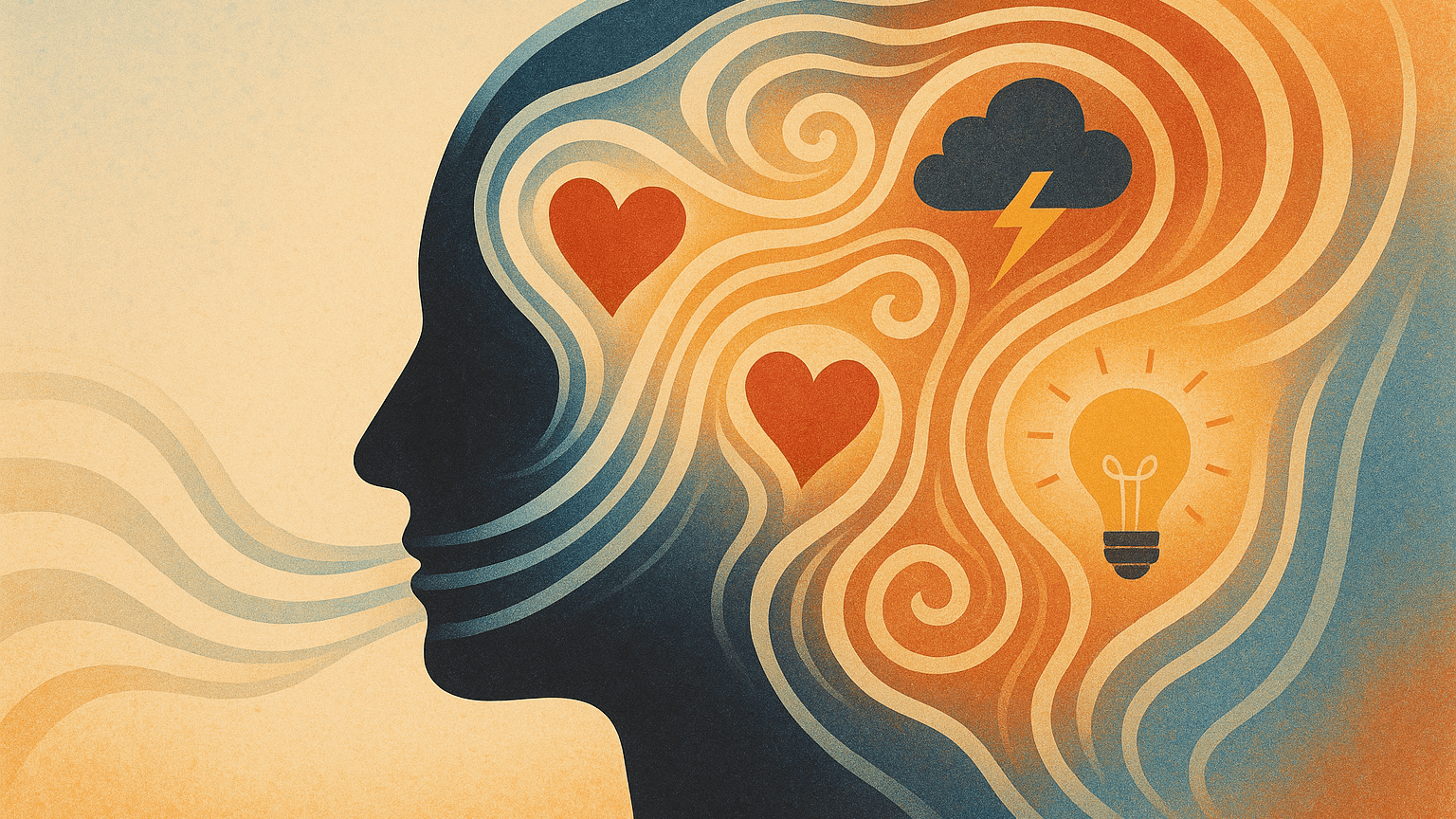
The Role of Emotion in Memory (And How AI Can Help You Engage)
Why do we remember the face of a stranger we spoke to once during a stressful day—but forget a list of terms we studied five times?
Why can a song from childhood instantly bring back an entire moment—but our exam prep notes vanish the minute the test begins?
The answer lies in emotion.
Memory is not just about repetition. It’s about relevance, meaning, and feeling. When we emotionally engage with information, we encode it more deeply, retrieve it more easily, and retain it for longer. That’s how our brains work—emotions tag memories as important.
But here’s the challenge: we often study in emotionally flat environments—isolated, quiet, repetitive. And AI, surprisingly, can help change that. Not by manufacturing fake enthusiasm, but by helping you build learning around your own emotional reality, personal stories, and inner personas.
🧠 Emotion and Memory: The Scientific Core
Here’s what research tells us:
- The amygdala, which processes emotion, interacts with the hippocampus, which processes memory.
- When emotion is present—especially joy, fear, surprise, or curiosity—your brain flags that moment as memorable.
- Stories, metaphors, and self-relevance improve encoding and retrieval.
- Emotion increases focus, mental energy, and meaning-making—all essential for learning.
So instead of treating yourself like a data processor, what if you approached studying as a full-body, full-soul activity?
🔍 Explore Your Inner Landscape First
Before using any tool, take a moment to reflect:
- What kinds of learning experiences have stuck with you in the past?
- When do you feel most engaged—curious, excited, challenged?
- What’s your default emotional state when studying? Numb? Frustrated? Rushed?
You’re not a machine. You’re a layered being with history, imagination, resistance, ambition—and yes, many inner voices.
AI can help you explore that terrain.
🧭 Prompt to Explore Learning Personas:
Prompt:
“Help me identify my inner learning personas. Include both helpful and self-sabotaging types. For each, describe their voice, their role in my study sessions, and how I can engage or reframe them to be supportive.”
You might meet:
- The Perfectionist: “This isn’t good enough, study harder.”
- The Avoider: “Let’s clean the entire house instead of reviewing.”
- The Curious Child: “Ooh! What’s this word mean?”
- The Rebel: “Why should I even care about this exam?”
Once you know who’s showing up to the desk with you—you can design learning that speaks to them.
🎭 Use Emotionally Relevant Prompts to Learn Better
Instead of passively absorbing data, have AI transform it into formats that activate emotion.
💬 Prompt Examples:
“Turn these physics concepts into a story about a superhero learning to fly.”
“Use metaphor to explain photosynthesis as a drama inside a plant factory.”
“Help me connect this history lesson to something personal or emotional.”
“Rewrite this math concept using a scene where I have to solve it to help a friend.”
You’re not just learning facts—you’re living them.
And when you make it personal, the brain remembers.
🔄 Rewriting Boring into Memorable
Here’s how AI can reshape lifeless material into sticky knowledge:
| Input | AI-Enhanced Emotional Learning |
|---|---|
| Dry bullet points | Turn into poetic metaphors |
| Boring textbook paragraphs | Summarize as a dramatic dialogue |
| Complex terms | Break down using humor or character-driven examples |
| Unmotivated mindset | Generate a pep talk from your “future self” |
You’re building memory by building meaning.
🧘♀️ Your Whole Self Is a Resource
Your emotions, past experiences, struggles, and imagination—none of it is a distraction from learning. It’s fuel.
Ask AI to:
- Help you write letters from your future self encouraging you.
- Turn your anxiety into a dialogue so you can understand it.
- Create rituals for learning that feel sacred, energizing, or calming.
- Reflect your progress back to you with motivational messages based on your own words.
You don’t need to be a robot. You need to be fully human.
🏁 Final Thought
The best learners aren’t the most disciplined. They’re the most connected—to their material, their purpose, and themselves.
AI isn’t here to make you cold and mechanical. It’s here to help you amplify your inner world, so your learning sticks, flows, and feels like it matters—because it does.
So next time you sit down to study, don’t shut off your feelings. Invite them in. Use your curiosity, your joy, your fears—even your frustration—as entry points.
Because memory lives where emotion does.